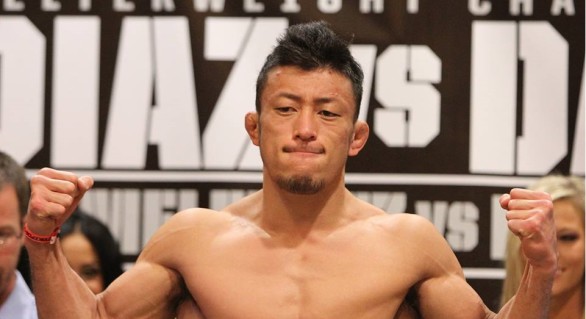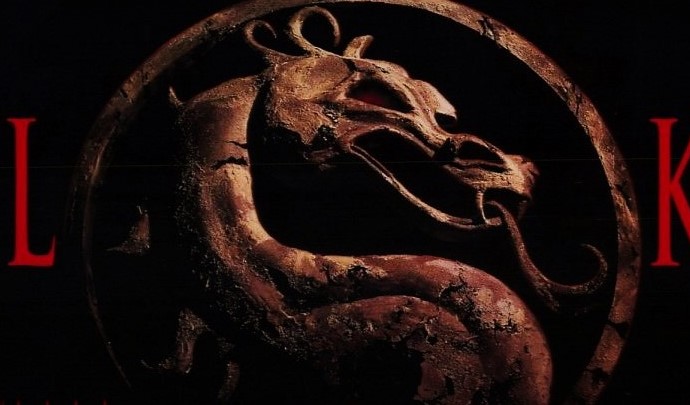
Perhaps the title is a misnomer; Shooto itself is becoming a forgotten promotion. But from the mid 90’s to early 00’s, the organization was the breeding ground for some of the greatest lightweight mixed martial artists to ever live.
Takanori Gomi, Rumina Sato, Caol Uno and Joachim Hansen all cut their teeth in the Japanese promotion. While many of their records have become checkered from a combination of old age and injuries they were utter terrors in their primes. Put it this way: combining each fighter’s first 15 fights produces a record of 49-7-4. It’s a record that’s even more absurd considering a good chunk of those 7 losses came against each other.
But a Shooto standout that gets overlooked is the man fighting in the co-main event of UFC Fight Night 69: Tatsuya Kawajiri.
Tatsuya Kawajiri is a small lightweight by today’s standards; 5’7″ with a 69″ reach. He was in line with some of his countrymen but gave up 1-3 ” in both height and reach to nearly every opponent. And yet, at 37 years old, Kawajiri’s record stands at an incredible 33-8-2 with no back to back losses and a murderer’s row of names notched on his belt.
So how did the “Crusher” do it?
Tatsuya Kawajiri was a master of distance. Kawajiri would stand at the edge of his opponents’ range using small, shuffling steps to maintain proper distance with his hands held slightly wider and forward than usual.
And from this range and stance Kawajiri was money.
On the edge of an opponent’s range a fighter has more time to see strikes and takedown attempts coming. It turns thunderous punches and kicks into glancing blows by mitigating the distance the strike can travel “through” the target upon connection. Kawajiri would compound this spacing advantage by using his interesting hand position to parry certain punches. He also had an incredible sprawl which stuffed takedowns from much larger and younger fighters.
His ringcraft was exceptional as well. The moment Kawajiri thought that his spacing was getting cornered he would circle out. He even used takedown attempts solely to get space; he would finish the “attempt” on his feet rather than his knees so that he could recover quickly. The only time he voluntarily stayed against the ropes was to stop a takedown attempt that he didn’t have time to sprawl for.
A prime example of this defensive prowess was against Takanori Gomi in their 2005 “Fight of the Year” match.
Many of Gomi’s brain rattling head shots either glanced off Kawajiri’s shoulders and forearms or were parried. Despite being a fantastic wrestler in his own right Gomi was unable to do much in the clinch besides throw partially blocked knees. Kawajiri’s spacing and circling meant that Gomi would throw a combination only to see most of the punches whiff.
Gomi went on to win but he had to put on arguably the best technical performance of his life to do it; switch hitting, baiting, and body work were all on display. Eventually Kawajiri’s admirable cardio was sapped and he was too tired to defend a rear naked choke. There is no shame in losing by forcing Takanori Gomi to reach another level.
But Kawajiri was no slouch on offense either. Similar to his defense it relied on spacing and timing instead of flash.
From the outside Kawajiri had a no-telegraph snap kick that targeted the opponent’s knee. It wasn’t the 70 yard field goal punt of Jose Aldo or Edson Barboza but it was accurate, fast and it hurt like hell. After taking a couple unanswered kicks opponents almost always tried to close distance which is what Kawajiri wanted as the smaller fighter.
In that clip above, notice how Kawajiri’s spacing allows him to avoid Calvan’s counter punches.
When an opponent tried to close in to attack Kawajiri would slip and throw a punch (usually a right). Because his hand was already slightly wide and the opponent was coming forward, Kawajiri could throw a cross with no wind up and still generate power and speed. After connecting he’d either circle away or grab a clinch and work for the takedown.
In top position, Kawajiri was smothering. His guard passing wasn’t explosive but very persistent and has 10 submission wins to date. Even most of his 12 TKO wins were simply a matter of him holding his opponent down and punching him in the head until the referee waved it off.
This basic defense and offense made great opponents look mediocre.
In 2003 Kawajiri faced Yves Edwards who was in his prime, possessed a 73″ reach and was in the middle of a run that would launch him into the conversation for #1 lightweight in the world. But every time Edwards tried to kick him Kawajiri would slip and throw a right hand. When Edwards moved forward to punch Kawajiri would duck, clinch, and take him down where he’d smother him. By the second round Edwards was so tentative that Kawajiri began walking him down and taking him down anyway towon an easy decision.
In 2010 Kawajiri faced current UFC lightweight Josh Thomson who stood at 5’10” with a 71″ reach. At that point he was 18-3-1 and a dexterous striker and wrestler yet Kawajiri made him look like a fool. Again shuffling at the edge Thomson’s range Kawajiri slipped almost every kick that Thomson threw and at one point unbalanced “The Punk” so much he fell like a cartoon character. Every opportunity Kawajiri got he closed the distance, threw Thomson to the floor and proceeded to work guard passes and hammer firsts for a decision win.
If it is difficult to consider those wins in a historical context, consider that Kawajiri almost beat Eddie Alvarez in 2008. That’s right, the top 3 boxer in MMA, walking around at 170 lbs with bricks for hands Alvarez.
Despite his significant size and strength advantage Alvarez couldn’t get Kawajiri down. In the event that he managed to put Kawajiri’s back on the ropes he found himself unable to do much in the clinch. Halfway in the first round Kawajiri timed Alavarez perfectly with a left hand as he came in and achieved full mount.
The savvy Alvarez managed to eventually escape and timed Kawajiri with an uppercut before finishing him with punches on the mat but the fact that it took such a big shot to change the tide against such a small opponent is astounding.
I hate to sound like your ex-girlfriend, but while size isn’t everything it matters a lot. Kawajiri had the most trouble against large, athletic fighters whom he couldn’t beat with his ground game (which describes the UFC roster). He was 32 when he decided to make the move to featherweight where lo and behold he has amassed a 6-1 record with his lone loss coming in a spirited contest to the relentless Clay Guida.
Tatsuya Kawajiri faces Dennis Siver this Saturday and I like his chances.
The German Taekwondo expert has become a wrestling force at featherweight but he gasses rather easily which is a problem Kawajiri doesn’t have even in his old age. Siver’s left hook is also a cookie cutter punch; it’s thrown to the same place with the same speed every time. If a fighter is always running into it like Andre Winner and George Sotiropoulos then great! If a fighter decides to adjust their range like Donald Cerrone and Conor McGregor it frequently whiffs.
And if there’s one thing the “Crusher” knows, it is range.
















